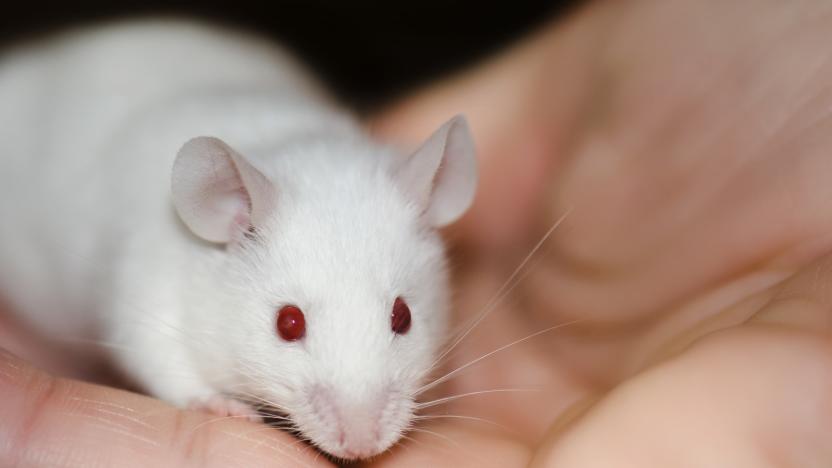CancerTreatment
Latest

Medicare now covers gene sequencing for patients with advanced cancer
Patients with advanced cancer will soon have access to more personalized treatment plans because Medicare will now cover genetic tests that sequence tumor cell DNA and help healthcare providers determine treatment strategies. As Wired reports, the Centers for Medicare & Medicaid Services (CMS) announced that for Medicare-enrolled patients with recurrent, metastatic, relapsed, refractory or stages III or IV cancer, such FDA-approved tests will be covered by their insurance. And since other insurance companies tend to take their cues from CMS, privately-insured patients will likely get similar coverage soon as well.

Researchers use nanorobots to kill tumors in mice
Our current methods of fighting malignant tumors are wildly inadequate. Chemotherapy and radiation treatments, while sometimes successful, come with massive side effects, mainly because every other cell in the body is also getting bombarded with chemicals and radiation even though the main targets are the tumor cells. Finding a way to specifically target tumor cells while leaving healthy cells alone is something that many researchers are working towards and a new study out today demonstrates that nanorobots made out of DNA could be an effective option.

Scientists could use Zika to fight brain cancer in the future
While Zika is known for causing birth defects like microcephaly and brain damage, it turns out the virus might also serve a very useful purpose -- fighting brain cancer. In a study published today in The Journal of Experimental Medicine, researchers show that Zika can actually take on a very hard to treat type of brain cancer.

Joe Biden implores SXSW crowd to use its talents to fight cancer
Like countless others, former Vice President Joe Biden has experienced the horrors of cancer up close. In 2015, his son Beau died at the age of 46 after a battle with brain cancer, a tragedy that inspired the vice president to spend much of his last year in office working on a "cancer moonshot" -- an initiative that helped pass a $6.3 billion research bill at the end of last year. At SXSW 2017 yesterday, Biden told a packed audience how his son's death kept him from running for president but spurred him into intense action that will continue in his private life. And he also implored the audience to use their talents to help make "gigantic progress" in the ongoing battle to detect, treat and prevent cancer.

Researchers develop femtosecond laser that can diagnose, blast cancerous tumors
Researchers at the University of Tennessee's Center for Laser Applications have developed a femtosecond laser that can non-invasively diagnose, map, irradiate and burn cancerous tumors. Utilizing a beam that pulses at one-quadrillionth of a second, the technology is able to seek out growths and obliterate them with an increased burst of intensity. "Using ultra-short light pulses gives us the ability to focus in a well confined region and the ability for intense radiation," says Associate Professor of Physics Christian Parigger. "This allows us to come in and leave a specific area quickly so we can diagnose and attack tumorous cells fast." The swift, precise technique can avoiding heating up adjacent, healthy tissues and has potential for use in outpatient procedures, particularly for people afflicted with brain tumors. For now, however, the scientists are working with the non-profit University of Tennessee Research Foundation to bring their tech to market. Roll past the jump for the press release and a glimpse of the laser in action.

Prague to host world's most powerful laser
To us, Prague will always be the Eastern European capital of roast duck, potato dumplings and tasty, cheap pilsner. But come 2015, the former Soviet Bloc city will also become home to the world's most powerful laser, as part of the European Union's Extreme Light Infrastructure project. According to plans released by the European Commission, the laser will produce peak power in the exawatt range (equivalent to one trillion megawatts). So, for a very small fraction of a second, the beam will generate one million times more power than the entire U.S. electric grid. Believe it or not, that's plenty of time to conduct experiments that could reveal new cancer treatments and ways to deal with nuclear waste. Breakthroughs in either category would be incredible for the €700 million (about $1 billion) project, which also includes future plans to build two similar lasers, and a third that's twice as powerful the Prague installation -- roughly the same current draw as an HTC Thunderbolt. [Image courtesy of Instructables]

Portable brain tumor treatment system kills cancer while you take out the trash
We've seen robots that perform brain surgery and lasers that cook tumors, and now a team of researchers are well on their way to bringing mobility to the battle against brain cancer. The NovoTTF-100A, which just received FDA approval, is basically a set of insulated electrodes, attached to an electronic box, that pumps low intensity electrical fields to the site of a freshly diagnosed GBM (glioblastoma multiforme) tumor. The fields, known as Tumor Treatment Fields (TTF), play off the electrically charged elements of cancer cells to stunt the tumor's growth, and may in some cases actually reverse it. A recent test of the system showed comparable results to chemotherapy, without the usual lineup of side effects, including nausea, anemia, fatigue, and infection. Given, patients using the system are expected to wear the thing continuously, but we'd say walking around with a cap full of electrodes is a small price to pay for giving cancer the boot. Full PR after the break.

Philips aims to reduce cancer treatment side effects with drug-loaded microbubbles
It may not be quite as attention-grabbing as lasers or nano explosives, but Philips Research seems to think that it's so-called microbubbles could have a big impact on cancer treatment nonetheless, and they're apparently already showing some promise. According to the company, the red-blood-cell-sized bubbles would be used to carry drugs through the patients bloodstream and tracked using ultrasound imaging. Then, once they've reached their target, a focused ultrasound pulse would rupture the bubbles and release their drug payload. That, Philips says, would not only increase the effectiveness of the drugs, but reduce the side effects normally associated with them and, ultimately, lead to a quicker recovery. From the looks of it, however, things are still at the pre-clinical stage, and there's no indication of any future plans just yet.





